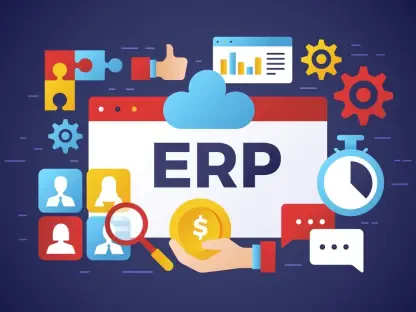As the landscape of enterprise technology continues to evolve, few areas are as dynamic and impactful as artificial intelligence. Today, I’m thrilled to sit down with Vijay Raina, a renowned expert in enterprise SaaS technology and software design. With his deep insights into how AI is reshaping business operations, Vijay offers a unique perspective on the latest trends, partnerships, and challenges in this space. In our conversation, we explore the surge of AI-driven enterprise deals, the transformative potential of AI in customer service, the strategic alliances shaping the industry, and the critical lessons from recent missteps in AI application.
How do you see the recent wave of AI companies partnering with major enterprises like Zendesk, IBM, and Deloitte influencing the broader tech landscape?
These partnerships are a game-changer. They signal a shift where AI isn’t just a buzzword but a core component of enterprise strategy. Companies like Zendesk, IBM, and Deloitte are looking to integrate AI to streamline operations, reduce costs, and enhance service delivery. What’s driving this wave is the promise of immediate, tangible returns—AI can scale solutions faster than traditional methods. It’s also a validation for AI firms; aligning with established players boosts credibility and opens doors to massive markets. This trend is likely to accelerate as more enterprises see competitors gaining an edge through AI adoption.
What makes enterprise deals a more immediate revenue opportunity for AI companies compared to consumer-focused applications?
Enterprise deals are often about solving specific, high-value problems—think automating customer support or optimizing data analysis. These are areas where businesses are willing to invest heavily because the return on investment is clear and often quick. Consumer apps, while potentially lucrative in the long term with massive user bases, take time to monetize due to the need for scale and engagement. Enterprises, on the other hand, sign contracts with defined budgets and timelines, providing AI companies with a steady cash flow to fuel further innovation.
How realistic is the claim that AI agents can handle 80% of customer service issues, and what’s the current state of tech to support that?
The 80% figure is ambitious but not entirely out of reach. Current AI tech, especially in natural language processing and machine learning, can handle routine inquiries, ticket routing, and basic troubleshooting quite well. These systems learn from vast datasets to predict and resolve common issues. However, the complexity lies in edge cases—unique or emotionally charged situations where human empathy and judgment are still irreplaceable. We’re close, but that last 20% often requires a human touch, at least for now. It’s more about refining algorithms and ensuring robust fallback mechanisms.
What are some of the standout advantages for businesses adopting AI in customer service over traditional human-led approaches?
The biggest advantage is efficiency. AI can operate 24/7, handle thousands of queries simultaneously, and reduce wait times dramatically. It also cuts costs—training and maintaining a large support staff is expensive, while AI scales with minimal overhead once deployed. Additionally, AI can analyze interactions to provide insights into customer behavior, helping businesses refine their offerings. It’s not just about replacing humans; it’s about freeing them up for more complex, value-added tasks while maintaining consistency in responses.
What potential pitfalls should companies be wary of when relying heavily on AI for customer interactions?
One major risk is the loss of personal connection. Customers often want to feel heard, especially during complaints, and AI can come across as cold or scripted if not designed well. There’s also the issue of errors—AI might misinterpret queries or provide incorrect solutions, leading to frustration. If something goes wrong, like a system outage or a bad response, there needs to be a seamless way to escalate to a human. Lastly, over-reliance on AI could erode trust if customers feel they’re being funneled into automated loops without real resolution.
How do you think customers will react to interacting with AI rather than humans when seeking support?
It’s a mixed bag. Many customers, especially younger, tech-savvy ones, are fine with AI if it’s quick and effective—they just want their issue solved. But others might feel alienated, especially in high-stakes or emotional situations where they crave human empathy. The key is transparency; if businesses are upfront that it’s AI and provide an easy path to a human when needed, acceptance will grow. Over time, as AI improves in tone and nuance, I think resistance will lessen, but it’ll never fully disappear for some segments.
What unique value do partnerships like those between Anthropic, IBM, and Deloitte bring to the AI ecosystem?
These collaborations are about combining strengths. Anthropic brings cutting-edge AI models and innovation, while IBM and Deloitte offer deep industry expertise, client networks, and integration capabilities. This synergy allows AI to be tailored to specific enterprise needs, whether it’s in consulting or tech infrastructure. It’s a win-win—Anthropic gains access to real-world deployment scenarios to refine its tech, while IBM and Deloitte enhance their offerings with state-of-the-art AI, staying competitive in a fast-evolving market.
How can such strategic alliances help smaller AI players compete against giants in the industry?
Partnering with established firms gives smaller AI players like Anthropic a foothold they wouldn’t have on their own. It’s about leverage—access to enterprise clients, resources, and credibility that would take years to build independently. These alliances also provide a testing ground for their tech at scale, which is critical for iteration and improvement. Against giants, it’s not just about tech superiority but about ecosystem integration, and partnerships offer a shortcut to relevance and market share.
What lessons can we draw from the incident involving Deloitte’s AI-generated report for the Australian government?
This incident is a stark reminder that AI isn’t a magic wand. Deloitte delivered a report with apparent AI hallucinations—fabricated or incorrect data—which led to pushback and a refund demand. It highlights that AI outputs, no matter how polished, can’t be taken at face value for critical work like government reports. The lesson is clear: human oversight is non-negotiable. Companies must validate every piece of AI-generated content, especially in high-stakes scenarios, or risk reputational damage and financial penalties.
How critical is it for businesses to verify AI outputs, and what responsibility do they bear when errors occur?
Verification is absolutely critical. AI is a tool, not a replacement for human judgment. Businesses have to treat AI outputs as a first draft—useful, but needing review. If errors slip through, like in Deloitte’s case, the responsibility lies with the company deploying the tech. They can’t just blame the AI; they’re accountable for the final product. This means investing in training, processes, and checks to catch issues before they reach clients or stakeholders. It’s about owning the outcome, not just the intent.
What is your forecast for the role of AI in professional services over the next few years?
I see AI becoming deeply embedded in professional services, from automating routine tasks like data analysis and report drafting to enhancing strategic decision-making with predictive insights. Firms will increasingly rely on AI to boost productivity and offer clients faster, data-driven solutions. However, the Deloitte incident shows we’ll also see a parallel push for governance—stricter standards and accountability measures to manage risks. The balance will be key: leveraging AI’s power while ensuring trust and accuracy remain paramount. I expect more partnerships and specialized AI tools tailored for sectors like consulting, law, and finance to emerge as well.









